News
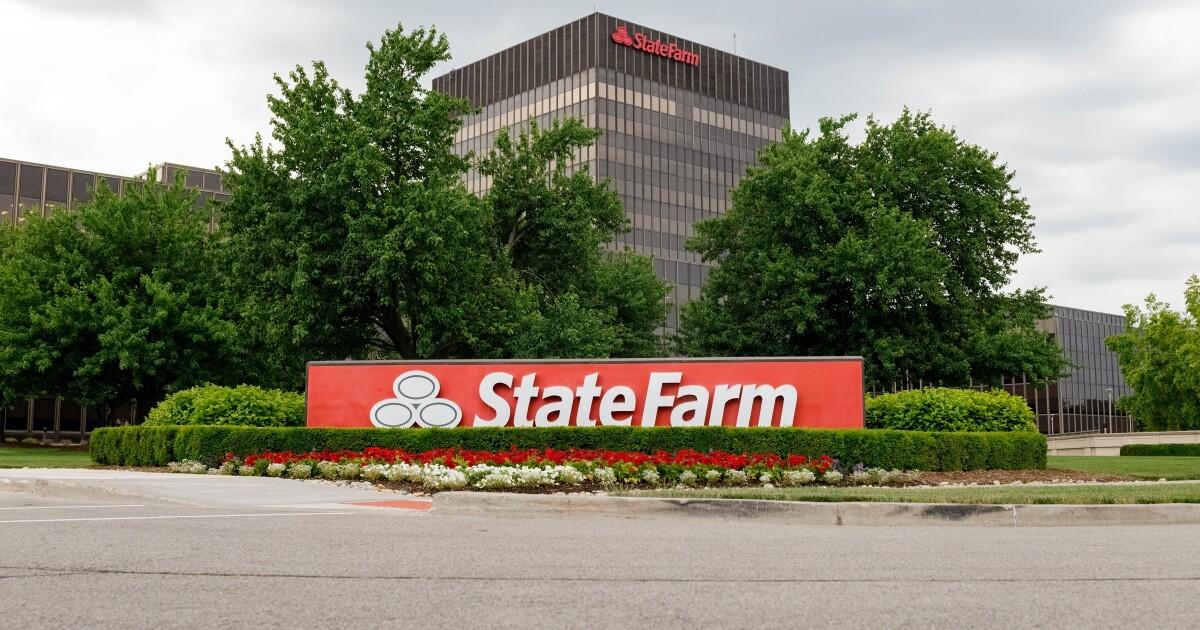
State Farm rolls out voluntary employee exit program | WGLT
State Farm has informed employees of a new voluntary exit program.
In an email obtained by WGLT, the Bloomington-based insurer says "if and when" changes are needed, the company will start with voluntary staff reductions whenever possible, but did not rule out the possibility of layoffs.
A State Farm spokesperson said the move is intended to give employees more choice when business areas need to make staffing adjustments.
“These changes are part of our continued efforts to shape a stronger, more flexible organization for the future," State Farm spokesperson Gina Morss-Fischer said. “Each business area will determine if, when, and how it would plan to use the new program and process based on its needs.”
The company is not saying when staff changes may be coming and how many jobs could be eliminated.
Morss-Fischer added State Farm employs about 13,000 people in McLean County, a number that’s been stable for a number of years.
“We do not anticipate those numbers to change significantly,” she said.
The last voluntary exit plan State Farm offered was in 2017.
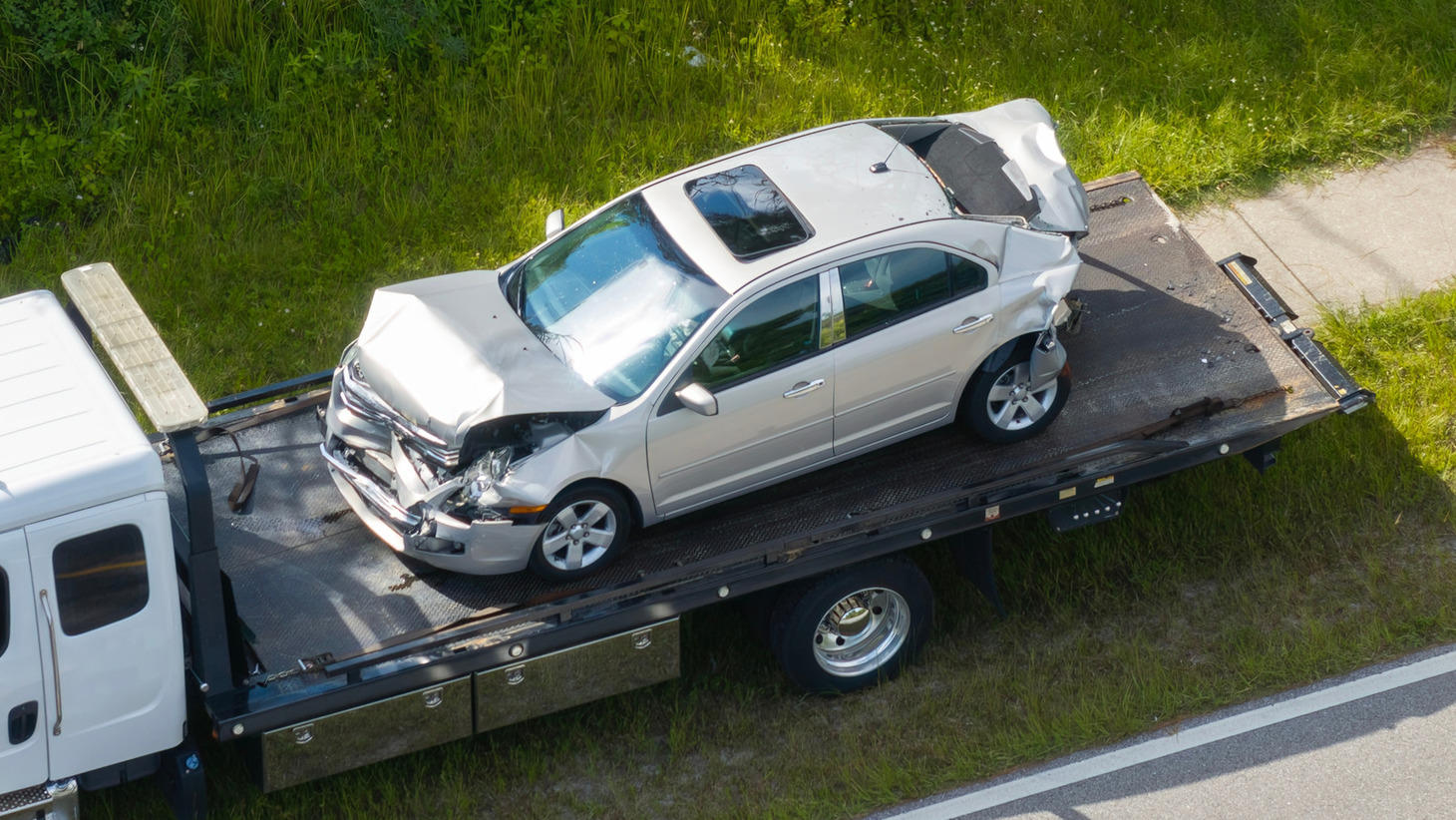
Jury Finds Insurance Company Short Changed Payouts For Totaled Cars
Have you ever totaled a car and felt like your insurance company wasn't paying you what you felt your car was worth? CBS News reports that a jury in Arkansas found that State Farm did exactly that to 37,000 customers in the state, and likely others as well.
The plaintiffs claim that the software State Farm used to calculate payout amounts did not calculate those amounts in a way that was fair to customers. The software assumed that buyers would be able to haggle a lower price on the replacement vehicle and calculated the payout based on that lower, negotiated purchase price. As car prices continue to skyrocket, there is significantly more demand for used cars than there used to be, leading to higher prices and dealers refusing to negotiate. The software calculating insurance payouts as though haggling is still possible leads to less buying power when it comes to purchasing a replacement vehicle.
"We work with the policyholder to determine the actual cash value of a total loss vehicle considering the age, condition, equipment, mileage of the vehicle at the time of the loss," State Farm told CBS News. Customers are "also invited to share additional information and has the option to use a third-party appraisal to help reach agreement on the value of their totaled vehicle." Insurers can be reasonable, even generous sometimes.

Actual cash value case against Progressive loses class action status
In another undervalued actual cash value (ACV) case against Progressive, the United States Court of Appeals for the Seventh Circuit has reversed class action status and remanded the case to the District Court.
The Southern Indiana case is brought by two Progressive policyholders, Heather Schroeder and Misty Tanner, who argue the insurer based their total loss vehicle ACVs on “Projected Sold Adjustments.”
The District Court “concluded that each putative class member could use common evidence to establish that Progressive employed an unacceptable method for calculating the actual cash value payments it offered insureds by applying Projected Sold Adjustments [and] certified a class on this basis,” according to the Seventh Circuit’s opinion.
Two similar class action lawsuits against Progressive, also filed in 2022 but in Ohio and Pennsylvania, moved out of Appellate Courts in July with opposite decisions.
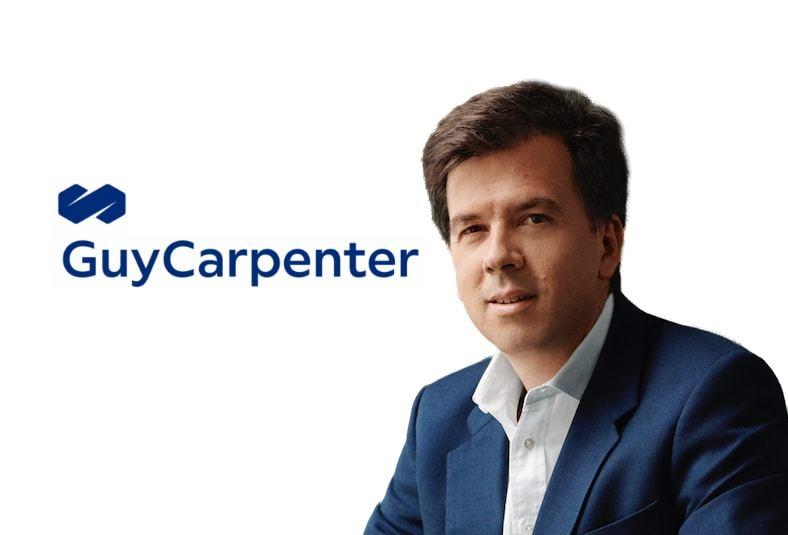
Reinsurance increasingly a buyer's market as focus shifts to growth: Rousseau, Guy Carpenter - Reinsurance News
Laurent Rousseau, CEO of EMEA and Global Capital Solutions at reinsurance broker Guy Carpenter, said recently that the reinsurance industry is “clearly and increasingly in a buyer’s market” and stressed that as returns continue to rise, insurers and reinsurers are looking to grow both organically and through M&A.
Guy Carpenter, the reinsurance broking arm of Marsh McLennan, held its pre-Monte Carlo briefing this afternoon, during which executives from the firm discussed market dynamics ahead of RVS 2025 and the January 2026 renewals.
The briefing included an insightful market overview from Rousseau, who shared his thoughts on the impact of the macroeconomic environment, the P&C reinsurance cycle, and strategies and opportunities the broker sees at play.
“First of all, the reinsurance industry is clearly and increasingly in a buyer’s market. We see an acceleration of the softening trends witnessed over the past two years,” he said. “Second, insurers and reinsurers strategic priority has shifted towards growth. As returns continue to increase, insurers and reinsurers are looking to grow further, both organically and through M&A. Third, given a challenging macro environment, it is a time for the insurance industry to shine and show its value add.”
Research

How autonomous vehicles will change the future of car insurance | S&P Global
Article Summary
As autonomous vehicle technology matures, the auto insurance industry faces new pressures to evolve. This article explores how increasing levels of vehicle automation are redefining risk, shifting liability, reshaping premiums, and altering the claims process.
- Understanding Autonomous Vehicles and Current Insurance Models
- Adoption Trends and Global Risk Implications
- How Autonomous Vehicles Will Impact Insurance Policies
- Effects on Insurance Premiums
- How the Claims Process will Change
- Data Access Barriers to AV Insurance Innovation
- Preparing for the Next Phase of AV Insurance
As vehicles become autonomous, the onus of liability changes. When a car under its own control is in a crash, the car is responsible — meaning liability lies with the OEM or autonomous technology provider. This marks a foundational shift in how auto policies are structured.
New policy models are being considered to reflect these realities. Some policies separate human-driver liability from that of system failures. Others cover specific components such as vision systems or decision engines. In commercial-use cases like robotaxis or autonomous freight, insurers are already exploring system-centric policies that treat the vehicle more like a mobile software platform than a traditional car.
Jewelers Mutual® 2025 Collectibles Study Reveals Jewelry Tops the List
Jewelers Mutual® Group, the only insurer with over a century of expertise dedicated to jewelry and jewelry businesses, recently unveiled findings from its 2025 Collectibles Study. This latest research sheds light on how and why people build collections, what they collect, and how they protect their collections.*
According to the nationwide study, collectors are investing significant time, money, and emotion into their passions, with nearly 40% valuing collections ranging between $10,000 and $50,000. Over 60% of respondents indicate they spend up to six hours each week curating their collections.
The nationwide study explored how people collect, protect, and value a wide range of possessions, from jewelry and watches to coins, art, and beyond, offering fresh insights into both the emotional and financial sides of collecting.
Jewelry Tops the List of Favorite Collectibles
Jewelry emerged as the most popular collectible category, followed closely by watches and coins. For many, the appeal lies not just in the items themselves, but in the stories and memories they carry.
Telematics, Driving & Insurance
The Impact of Technology on Auto Insurance - Technology Org
Technology. You can’t help but see it everywhere you go. There is almost no industry that hasn’t been impacted by the rise of technology. The interesting thing is to note whether or not technology has impacted these industries positively or negatively. One that has received quite a lot of positive attention for how to leverage tech to its advantage is the auto insurance market.
When it comes to understanding how tech is under in the car insurance world, there are a couple of things you have to remember. First, you need to start by understanding how it uses smarter pricing, then how tech is used to allow clients to claim faster and easier, plus, it also means that AI is now used, which benefits both clients and insurers.
Smarter Pricing with Telematics In the past, your auto insurance premium was based on fairly general categories like your age, gender, location and driving record. While these factors are still relevant, telematics technology has made pricing much more personalized. By using devices or mobile apps that track driving behavior, insurers can now calculate risk based on how you actually drive.
InsurTech/M&A/Finance💰/Collaboration
INTX Insurance Software and PropertyLens Announce Integration to Power Smarter Underwriting
INTX Insurance Software (INTX), a leading provider of end-to-end policy administration solutions for the P&C insurance industry, has partnered with PropertyLens, a cutting-edge real estate intelligence platform, to bring deeper, real-time property data directly into the insurance workflow.
This new collaboration enhances how insurance carriers and MGAs assess risk, manage policies, and make data-driven decisions.
By integrating PropertyLens’s comprehensive property datasets into the INTX platform, underwriters and operations teams can access accurate structure details, historical data, and risk indicators—without toggling between systems. The result is faster quoting, better-informed underwriting, and more streamlined policy management, all from within a single unified environment.
“PropertyLens brings tremendous value to our platform,” said Robert Lewis, CEO of INTX. “By embedding their robust property intelligence directly into our system, we’re helping insurers and MGAs make smarter, faster decisions at every step of the policy lifecycle. It’s all about giving our users the tools they need to work more efficiently and deliver better service to their customers.”
“At PropertyLens, we’re focused on simplifying how insurers access and use property data,” said Bob Frady, CEO of PropertyLens. “This partnership with INTX helps bring our capabilities directly to the point of decision-making, enabling carriers and MGAs to unlock powerful insights exactly when and where they need them.”
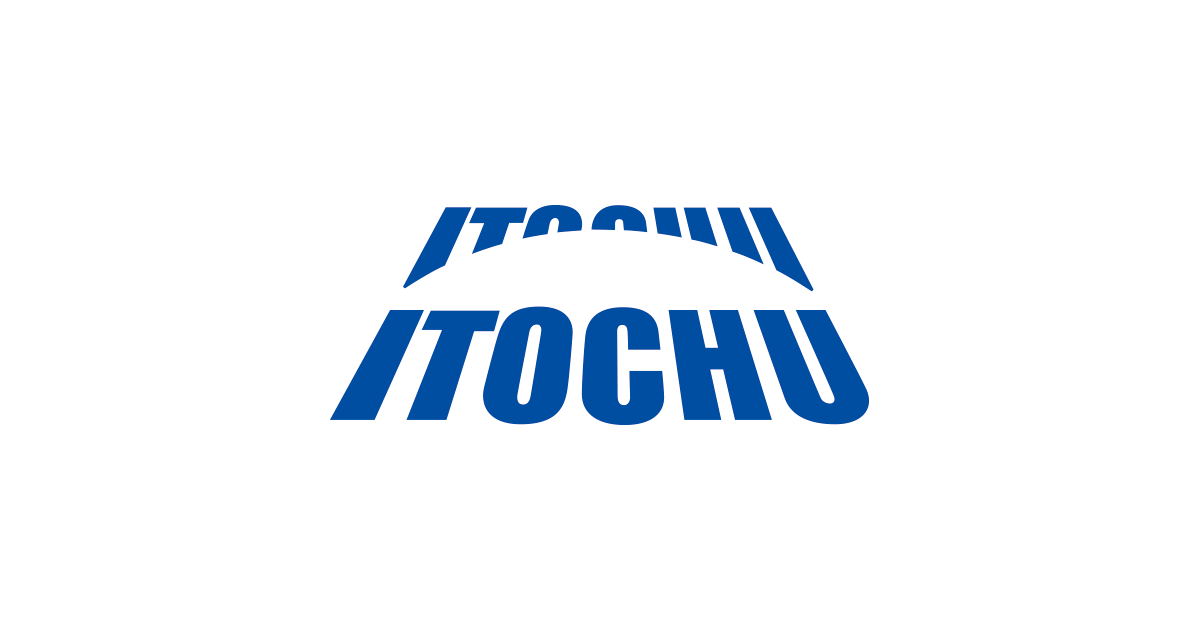
ITOCHU Announces the Formation of a Financial and Business Partnership with MOTER Technologies, Inc., a US-based Insurance Software Development Company
In the US, the world’s largest auto insurance market, the use of risk analysis services and telematics insurance (Usage Based Insurance: UBI) utilizing driving data and driver behavior data has quickly expanded following the popularization of connected cars and advanced driving assist systems.*
The US auto insurance market is expected to grow by an average of 5% annually from 2024 to 2030, with data-driven insurance products estimated to account for around 35% of the market*2.
MOTER is an InsurTech3 company established in April 2021 as a wholly owned subsidiary of Aioi Nissay Dowa Insurance Co., Ltd. Partnering with major automobile manufacturers, MOTER develops its own scoring models to accurately determine safe driving and accident risks through AI analysis of driving data and onboard camera footage. Using this scoring model, MOTER develops auto insurance offered under automobile manufacturers’ brand names as well as risk management services for fleet management companies, and also provides data analysis services for insurance companies. They have also obtained certification as a Managing General Agent (MGA4) to provide insurance incorporating automobile manufacturers' core services in all 50 states*5, and are expected to further expand this business.
With its strengths in the retail insurance sector in Japan, including HOKEN NO MADOGUCHI GROUP INC., ITOCHU is enhancing its local retail insurance operations through its investment in Thaivivat Insurance PCL., a non-life insurance company in Thailand and Laos.6 In May 2025, ITOCHU also invested in Churchill Innovative Holdings LLC, a US-based individual health insurance distribution platform, initiating a full-scale launch into the US insurance market.7
Financial Results
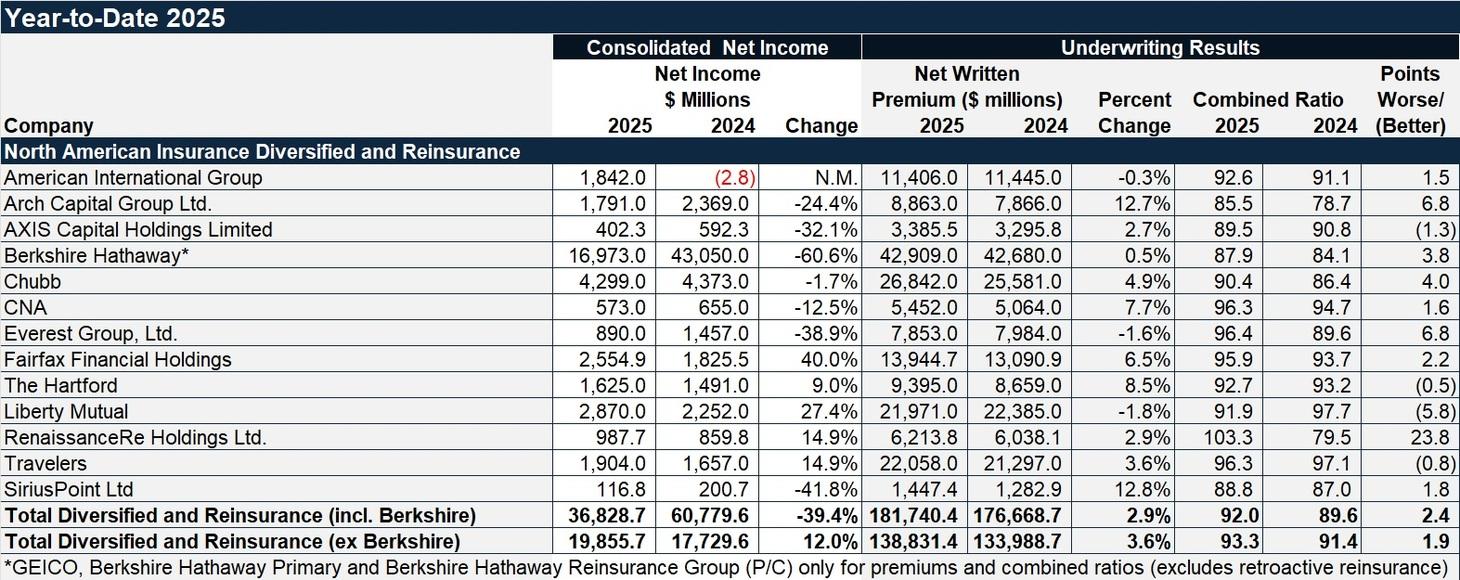
The Year So Far: Liberty Improves Most Among Nationals; Discipline Tested
Carrier Management summary of earnings metrics for the year so far reveals a second-quarter average combined ratio of roughly 88, and a year-to-date ratio of just under 92 for a cohort of 27 insurers.
Among the group, made up of carriers who reported their GAAP results publicly via press releases or conference calls, two-thirds had better combined ratios in second-quarter 2025 compared to second-quarter 2024. Year-to-date, only one-third had better combined ratios in 2025.

New Insurance Industry Report: First Quarter Losses Outpace Historical Averages but Stabilize in Second Quarter, Combined Ratio Improves
Verisk (Nasdaq: VRSK), a leading strategic data analytics and technology partner to the global insurance industry, and The American Property Casualty Insurance Association (APCIA), the primary national trade association for home, auto and business insurers, today reported half-year underwriting gains for the insurance industry, which are estimated to be $11.5 billion. Despite persistent headwinds, the industry maintained underwriting profitability through midyear 2025, driven by more adequate premium rates and investment gains.
According to key financial indicators for private U.S. property/casualty insurers, the first half of 2025 experienced losses in line with the escalated levels seen in recent years. First-quarter losses, driven largely by the Palisades and Eaton wildfires, outpaced historical averages but did not carry over at the same magnitude in the second quarter. Surplus levels remained historically high at $1.08 trillion, reinforcing the industry’s strong financial positioning and ability to meet policyholder obligations; however, inflation, climate volatility and line-specific pressures continue to challenge long-term overall profitability.
Cyber Risk
Shifting cyber insurance growth into the next gear | Swiss Re
Despite a fast-evolving cyber threat landscape, the cyber insurance growth story has continued to slow, with Swiss Re's latest data showing a third consecutive year of rate deterioration and reduced organic growth. So, what is holding cyber insurance back from keeping pace with cyber risk – and what will be needed to help it shift into the next gear for stronger growth?
Last year, Swiss Re's cyber reinsurance team examined why the double-digit cyber premium CAGR 1 seen from 2017 to 2022 then slowed so rapidly to single-digit CAGR. This latest update highlights the market's underlying conditions, key growth drivers and avenues for future growth.
- North America continues to dominate, commanding 66% of premium share (or approximately USD 10.28 billion).
Europe remains the second largest region, commanding 21% premium share while APAC ranks as the third largest market for cyber premium with a 10% premium share, and the Latam and MEA regions remain small in terms of current cyber insurance premium.
The untapped cyber market growth potential of many economies across both Europe and APAC is evident and promising.
Rate reductions eroding organic exposure growth
The overall growth of the cyber market can be broken down into two main metrics:
- Organic exposure growth (i.e. new customers purchasing policies and existing customers purchasing higher limits)
- Rate growth (i.e. higher premiums for the same limits)
While cyber does continue to prove a compelling business line, with Swiss Re projecting full-year 2025 premium to hit USD 15.6 billion, growth estimates have been revised from 6% to 5% CAGR as from 2023. The ambitious exponential cyber growth forecasts frequently circulated in the industry are unlikely to materialise. SEE GRAPHS
